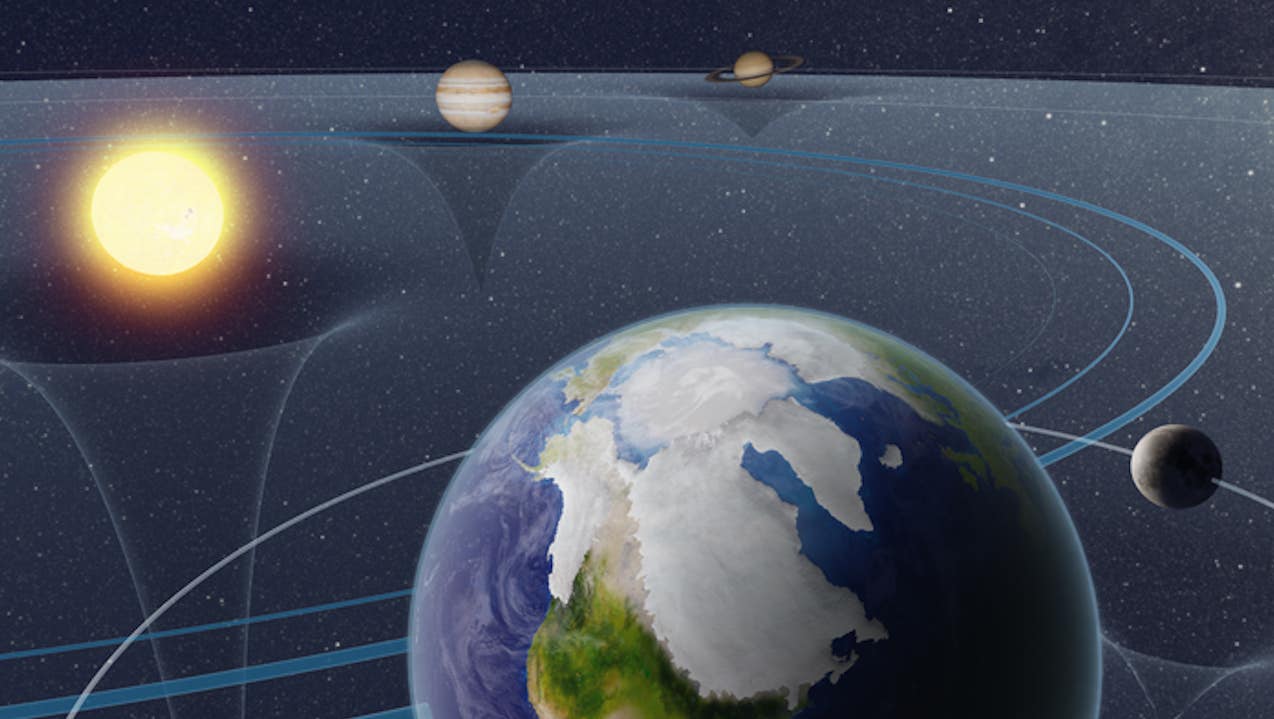New research links ice ages to shifts in the Earth’s orbit
Study reveals Earth’s natural climate cycles predict an ice age in 10,000 years—unless human emissions have permanently altered the timeline.

A study tracking Earth’s climate over a million years finds a predictable pattern of ice ages and warm periods. (CREDIT: NAOJ)
Earth’s climate has long been shaped by subtle but powerful shifts in its orbit. These slow, predictable changes drive the planet in and out of ice ages over tens of thousands of years.
A recent study offers new insights into this natural climate rhythm, suggesting that, without human influence, the next ice age would likely begin in about 10,000 years.
Orbital Patterns and Ice Ages
The theory explaining these cycles, known as Milankovitch theory, describes how variations in Earth’s orbit and axial tilt affect sunlight distribution. The planet's axial tilt, or obliquity, fluctuates over a 41,000-year cycle, altering seasonal intensity.
A second factor, precession, shifts the timing of the solstices and equinoxes over a 21,000-year cycle. Lastly, Earth's orbit changes from nearly circular to more elliptical in a 100,000-year cycle, a factor known as eccentricity.
While these orbital changes seem minor, they profoundly influence global climate by determining how much sunlight reaches high latitudes during summer months.
Milutin Milankovitch proposed his theory in the early 20th century, but evidence supporting it only emerged in 1976 when researchers Hays, Imbrie, and Shackleton identified its signature in paleoclimate records. Their data showed that past ice ages aligned with these orbital variations.
However, one puzzle remained: the dominant 100,000-year glacial cycle appeared too strong to be explained by eccentricity alone, leading scientists to question what additional mechanisms might amplify its impact.
A New Breakthrough in Climate Science
Recent research, published in Science, reanalyzed a million years of climate history. Scientists tracked changes in Northern Hemisphere ice sheets and deep-ocean temperatures, correlating them with Earth's orbital shifts. The team, which included researchers from UC Santa Barbara, found a strikingly consistent pattern governing glacial cycles.
Related Stories
“We found a predictable pattern over the past million years for the timing of when Earth's climate changes between glacial ‘ice ages’ and mild warm periods like today, called interglacials,” said Lorraine Lisiecki, a professor of Earth Science at University of California, Santa Barbara. One type of orbital shift signaled the end of ice ages, while another marked their onset.
Lead author Stephen Barker of Cardiff University noted the study’s surprising clarity. “It is quite hard to believe that the pattern has not been seen before.” This discovery helps resolve longstanding debates about which orbital factors play the biggest role in glaciation.
The Future of Earth’s Climate
Over the past 900,000 years, each glaciation has followed a predictable cycle. Without human impact, Earth would be midway through a stable warm period, with the next ice age due in 10,000 years. However, greenhouse gas emissions have likely disrupted this natural cycle.
Co-author Chronis Tzedakis from University College London explained, “We are now able to provide an initial prediction of when our climate might return to a glacial state.”
But Gregor Knorr, of the Alfred Wegener Institute, added a crucial caveat: “Such a transition to a glacial state in 10,000 years’ time is very unlikely to happen because human emissions of carbon dioxide have already diverted the climate from its natural course.”
This research not only deepens understanding of past climate shifts but also provides a foundation for predicting future trends. By calibrating past changes, scientists hope to refine climate models and quantify the long-term effects of human activities.
A Critical Moment for Climate Action
The ability to predict climate shifts over tens of thousands of years highlights the delicate balance of Earth’s climate system. The study reinforces that natural glacial cycles are not chaotic but highly structured.
“Now we know that climate is largely predictable over these long timescales, we can actually use past changes to inform us about what could happen in the future,” Barker said.
As greenhouse gases push the planet into uncharted territory, understanding natural climate rhythms is crucial. The choices made today will determine how much Earth's climate deviates from its historical path.
With this new research, scientists have an even clearer picture of how human influence is shaping the planet’s long-term future.
Note: Materials provided above by The Brighter Side of News. Content may be edited for style and length.
Like these kind of feel good stories? Get The Brighter Side of News' newsletter.
Joseph Shavit
Head Science News Writer | Communicating Innovation & Discovery
Based in Los Angeles, Joseph Shavit is an accomplished science journalist, head science news writer and co-founder at The Brighter Side of News, where he translates cutting-edge discoveries into compelling stories for a broad audience. With a strong background spanning science, business, product management, media leadership, and entrepreneurship, Joseph brings a unique perspective to science communication. His expertise allows him to uncover the intersection of technological advancements and market potential, shedding light on how groundbreaking research evolves into transformative products and industries.



